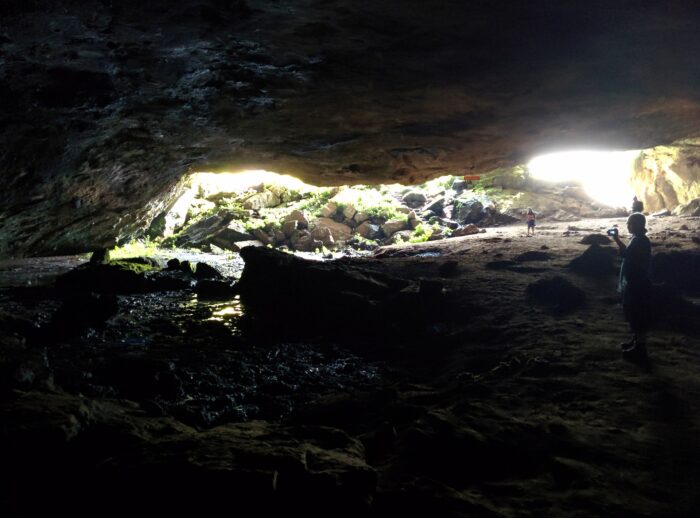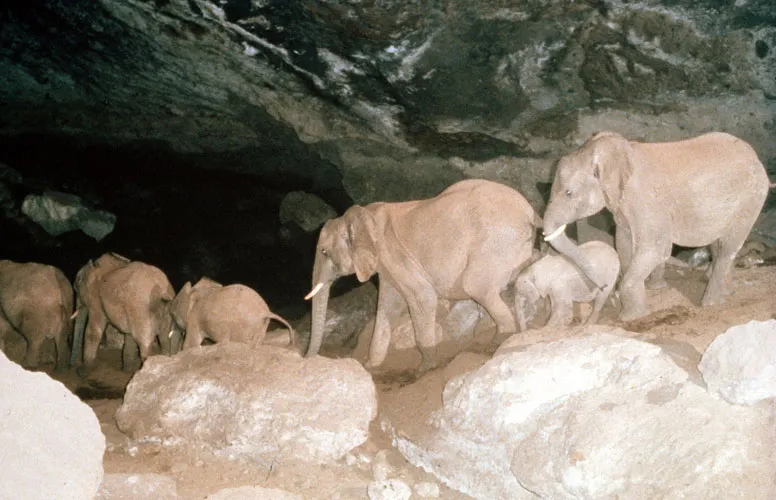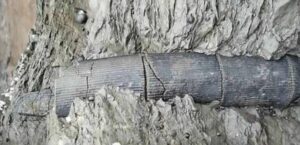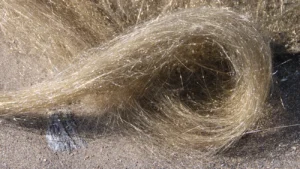In the dead of night on Mount Elgon in Kenya, species large and small gather in an uneasy truce. They’re not looking to socialize. Their eyes are on the prize. For thousands of years, animals have gone deep into this darkness of a mountain cave in search of minerals they need to survive. However, this spot, teeming with biodiversity, also teems with something extremely deadly.
Background
Kitum Cave is one of five caves on Mount Elgon, an extinct shield volcano on the border between Kenya and Uganda. It formed over 20 million years ago during the Miocene, a period marked by significant tectonic upheavals. During this era, rivers of basaltic lava created an exceptionally high dome that became Elgon. It was once the highest mountain in Africa, surpassing Mount Kilimanjaro, before erosion and weathering completely changed its shape and height. However, it still has the largest volcanic base in the world, covering over 4,000 square kilometers.
When erosion and weathering occurred, exposing the insides of the mountain and creating caves, something peculiar started to happen. Herds of bush elephants hiked up its slopes, as if drawn to it by an invisible force. Eventually, local people realized that the elephants had found a large salt lick. The animals consume the highly concentrated minerals to gain essential nutrients. Kitum Cave’s walls are lathered with sodium, calcium, magnesium, and phosphates — remnants of that old lava.

Mount Elgon. Photo: Uganda Safaris
These elephants that ventured into the cave used their tusks to scrape the minerals off the walls. This made the cave expand over time. The elephants taught this behavior to the calves accompanying them. Other animals like buffaloes, bushbucks, and hyenas followed.
Usually, the species are solely focused on getting those minerals and don’t bother each other. However, the elephants’ effects are the most significant. Tusk marks cover the walls, scraped by these unwitting “geological engineers.”
Today, the cave goes 213m deep and is riddled with dangerous crevasses through which baby elephants and other animals have fallen. Human visitors must go with a guide. But the usual dangers in caves are not the only reason why you shouldn’t venture off on your own.
An unseen peril
The problem really started in the 1980s. Author Richard Preston, in his book The Hot Zone, investigated Kitum Cave and the mysterious deaths that had occurred there. He told the story of a Frenchman and self-taught naturalist named Charles Monet (a pseudonym), who came to the cave because of his love of animals and curiosity about Kenya’s natural attractions. However, this led to his death. As Preston described it:
They crossed a platform covered with powdery dry elephant dung, their feet kicking up puffs of dust as they advanced…On the seventh day after his New Year’s visit to Kitum Cave – January 8, 1980 – Monet felt a throbbing pain behind his eyeballs.
…Then, on the third day after his headache started, he became nauseated, spiked a fever, and began to vomit. His vomiting grew intense and turned into dry heaves. At the same time, he became strangely passive. His face lost all appearance of life and set itself into an expressionless mask, with the eyeballs fixed, paralytic, and staring. The eyelids were slightly droopy, which gave him a peculiar appearance, as if his eyes were popping out of his head and half-closed at the same time.
Scared for his life
Monet, scared for his life, took a plane to Nairobi to get to a large hospital. He vomited the whole way, and his vomit started to turn black. He threw up all over the doctor and eventually, he slipped into a coma from which he would not awaken. Monet died on January 15, 1980.
Upon performing an autopsy, doctors found his organs destroyed. His liver had turned a startling yellow, his intestines were full of blood, and everything was essentially sludge. It wasn’t long until the doctor at the hospital caught whatever Monet had, but remarkably, he survived. He was treated by a foreign doctor, who sent a sample of his blood abroad for testing. This led to a shocking revelation: The doctor had contracted the Marburg virus.

Inside Kitum Cave. Photo: datakid musicman/Flickr
Marburg is an extremely deadly cousin of Ebola. Its first known outbreak was in 1967, when lab workers in Marburg and Frankfurt, Germany, and Belgrade, Serbia, became ill with a severe and violent hemorrhagic fever. The outbreaks were traced to the African green monkeys from Uganda that were in the labs. However, the animals were just carriers. No one knew where the monkeys got the disease. Marburg virus has an 88% fatality rate.
Unknown origin
The question remained: What was the origin of this disease? Preston stated:
After erupting in Charles Monet and [his doctor], Marburg dropped out of sight, and no one could say where it had gone. It seemed to vanish off the face of the earth, but viruses never go away, they only hide, and Marburg continued to cycle in some reservoir of animals or insects in Africa.
A few years later, in 1987, a young Danish boy ended up dying after his visit to Kitum Cave. Peter Cardinal (also a pseudonym) had visited the cave during a family vacation. The symptoms were similar: uncontrolled internal bleeding and destruction of organs. Richard Preston described the gruesome death as “slowly torn apart by an invisible predator.”
American virologist Gene Johnson enlisted the help of the U.S. Military to find the virus’s vector species. They tested large groups of animals, including those of an Egyptian fruit bat colony living on the cave roof. However, the expedition came away empty-handed. It wasn’t until 2007 that scientists had a breakthrough at Kitaka Mine in Uganda when miners fell ill. They found the virus in an Egyptian fruit bat, indicating that these were, in fact, the reservoir host.

Elephants lick salt from the walls. Photo: Richard Preston
According to Preston, the Cardinal family spoke of Peter’s love for geology and that he wanted to dig in the cave for crystals. With a hammer, he scraped and broke off pieces of the rock wall. There is the hypothesis that Peter probably had a minor cut on his hands where his blood came into contact with bat feces or urine. But how did the bats get it? We still don’t know.
Conclusion
Kitum Cave was briefly closed to the public while researchers collected their data. However, authorities eventually reopened it. Tourists can go, but only with a guide. So, if you dare to get close to one of the deadliest viruses on the planet, you do so at your own risk.






